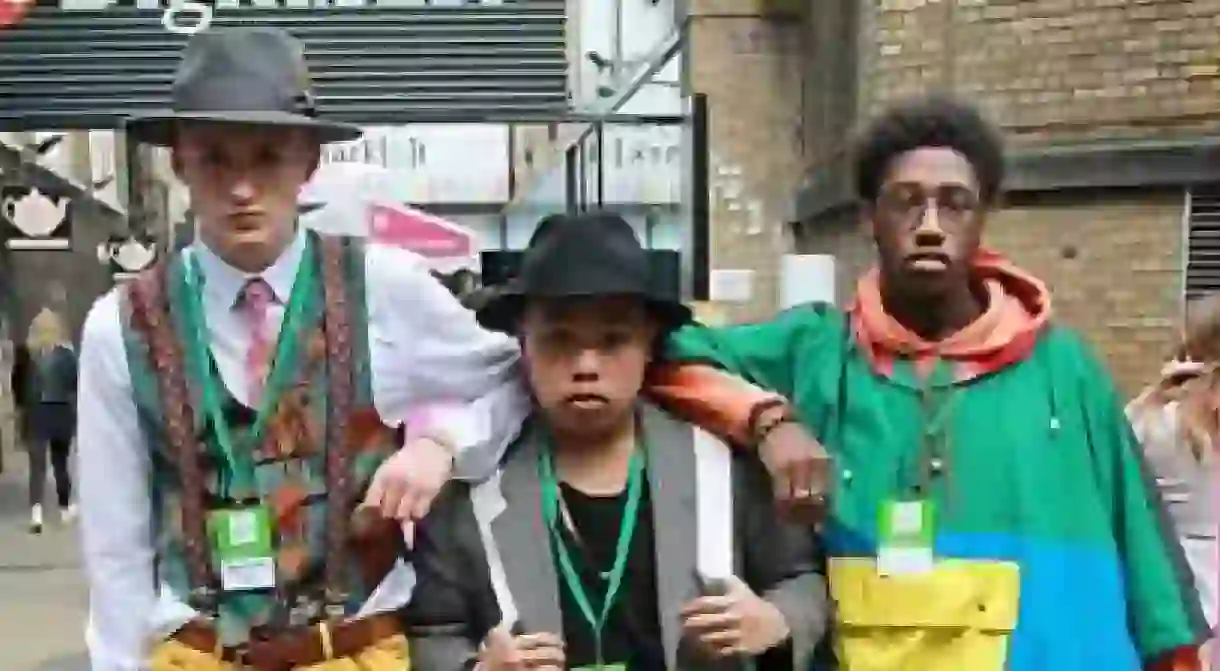An Interview with Stuart Tingini on London Street Style Photography

East London photographer Stuart Tingini explains the beauty of street style photography, while simultaneously explaining the difficulty of capturing a photo on the go. Discover London street style by exploring Tingini’s work and the reasoning behind his photographs.

In a café in Shoreditch, Tingini is smiling as he discusses the nature of his work. In the middle of the interview, he runs out to capture a photograph of someone whose appearance he finds interesting, indicating the enthusiasm he has for street style. We start off by talking about the reason he decided to pursue street photography. His photography, he explains, is something he does on the side, as his main income comes from studio photoshoots and event photography.
“I stop people on the street and it becomes a two-way exchange.” He says he is validating the effort people put into their personal style. It’s about the small exchanges that happen between him and the person he is photographing that make his efforts worthwhile.

Tingini once stopped a woman on the street to photograph her. She then asked him to send it over to her because she was wearing her grandmother’s jumper and felt that her grandmother should see it being appreciated. Small moments like that make his photography a compliment, an affirmation of someone’s effort to express themselves sartorially.

Tingini has always been interested in fashion. However, he is not interested in luxury or catwalk couture because he says “anyone can put an outfit together without having a lot of funding for it.” Most fashionistas he knows spend a while looking for bargains and vintage pieces that can be combined into an interesting outfit. Tingini brings up an example of unusual accessory finds; hipster glasses are something a lot of people often buy, however when that frame sits perfectly on the face, in his opinion it is especially worth appreciating. Another example is a friend of his who tends to match her clothing with her pink hair in a way that doesn’t cause collision of colour, often choosing different shades of pink in her daily outfits. Coordination seems to be key in his clothing preference. “When you see fashionable wear, you see it and you just know it looks good.”

“I walk around with my camera out of its case 90 percent of the time, just in case I want to capture a moment I see, whether its someone sitting in a café or passing by me on the street.” Tingini started stopping random people and photographing them two years ago after he opened his Facebook page. He does a lot of professional shoots and street style is a way of demonstrating the fact that he can capture a photo instantaneously in natural conditions. A good contribution to his portfolio, it is also free marketing.

“I don’t post every picture I take because often the camera doesn’t do enough justice to the look, I am not going to post a photo if I haven’t done that outfit enough justice.” Tingini’s approach to street style has an altruistic aspect to it. It’s about giving that look and person enough credit. Tingini speaks of the café portraits he likes to take of people sitting and reading or having a cup of coffee; he tries to take a photo of that moment, but the need to ask for permission often disrupts its specialty.

Unlike a lot of other street style photographers, Tingini is not looking for the quirkiest dressed people, but instead searches for individuality. “Some people I photograph on the street I end up photographing for real, in studios.” For example, a Norwegian girl he met at a party who was singing classical music turned out to be a perfect subject for his professional photos.

We went on to talk about the ‘hipster’ image, as Tingini lives in the ‘hipster’ neighbourhood of East London. He agreed that perhaps it is a subculture focused on the right type of things such as sustainability, like choosing to wear secondhand clothing that also looks quite unique. The photographer speaks of living in East London as a good choice, with great opportunities for street style photography. He also mentions Brixton as a great place to find fashion conscious people.

Discussing trends, Tingini spoke of the balance and misbalance of silhouettes, the everyday use of platforms as an alternative to heels, as well as the current return of flares. Tingini also finds it interesting to photograph tourists and people from other cultures. He mentions Asian girls and the vibrancy of the colours of their wardrobes as well as the smart attire of French men. When it comes to Londoners, Tingini speaks of layers (particularly coats) as often restricting when it comes to noticing interesting looks. He is very fond of summer style and the colours that pour onto the street with it.

In terms of what the future holds for him, Tingini is planning to exhibit his best studio and street style work soon in Bethnal Green. He plans to invite the people in the photographs to the exhibition. Imagine the thrill of suddenly being in a gallery simply because of that one day you wore that one thing and looked particularly good in it. He also wants to add more information about the people he photographs in his posts, including their names and occupations (his inspiration for this is Humans of New York).
Understanding the approach to street style photography leads to thinking about the different ways in which each street style photographer approaches their subjects. It also indicates the significance this medium has to our generation as an artistic record of what people, outside of high fashion, are wearing.














